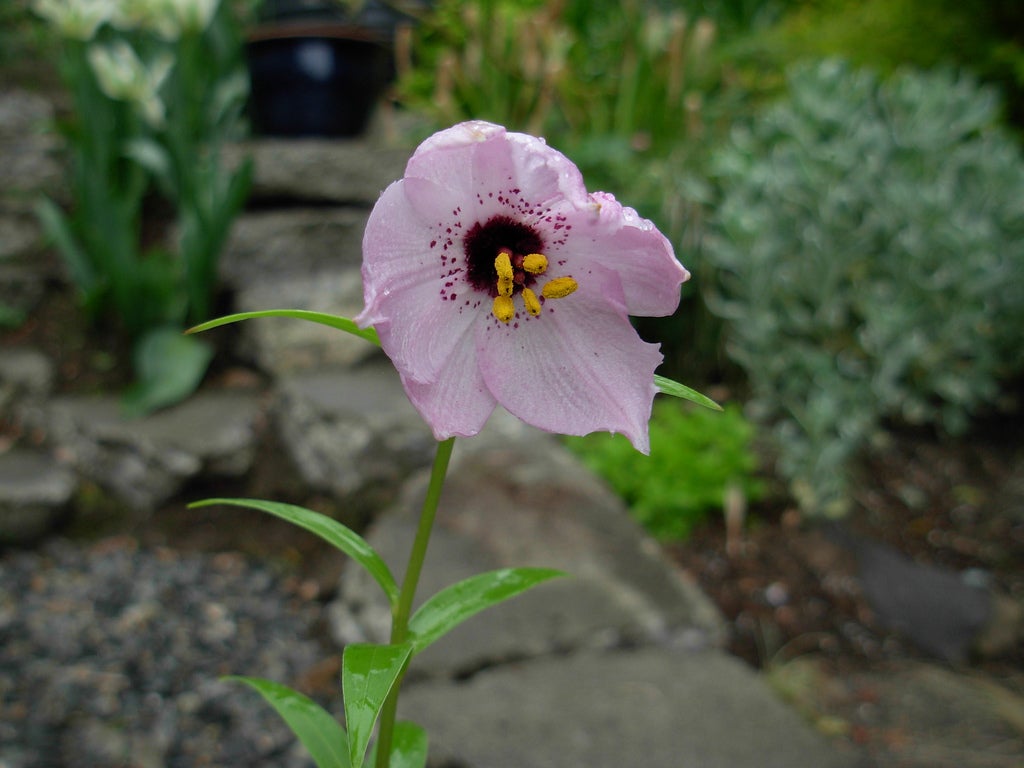Nomocharis Lily Care: How To Grow Chinese Alpine Lilies


For many homeowners and professional landscapers, lilies make an excellent addition to ornamental flower beds and borders. Blooming for only a short period, these large, showy flowers serve as a stunning focal point in plantings. This, combined with their easy growth habit, make flowering lilies a popular choice with beginning gardeners. While common lily types, such as Asiatic and oriental, are easy to find online and in plant nurseries, more rare families of these plants may be difficult to locate – like the alpine lily, which is especially prized by devout flower growers.
About Nomocharis Bulbs
While very similar in bulb and flowering appearance, alpine lilies (Nomocharis) are not technically in the lily (Lilium) family. Native to regions of Northern India, China, and Burma, these ornamental plants produce flowers that range in color from light pink to pink-purple. Depending upon the variety, these blooms may also exhibit unique, dark purple-spotted patterns throughout the flower petals that make them exceptionally beautiful.
How to Grow Chinese Alpine Lilies
Similar to many lilies, Nomocharis lily care is relatively simple. Chinese alpine lilies may be grown from seed, from bulbs, or from the transplant of bareroots. It will be likely that locating seeds or plants will be quite difficult. Alpine lilies are unlikely to be found at many local plant nurseries and are scarcely available for order online. When purchasing these plants, always make certain to use a reliable and reputable source. This will ensure that growers receive the correct plant, as well as a healthy and disease free one.
Alpine lily seeds will benefit from a period of cold stratification. Before planting, allow the seeds to chill for a period of at least 4 weeks. Afterward, use seed starting trays indoors and a high quality soilless seed starting mix. Lightly cover the seeds, and be certain to maintain adequate moisture throughout the germination process. This should take a period of time between three and six weeks. Seedlings will take several years before they are ready to be transplanted into the garden.
Planting the flowering bulbs is often the best option. Simply plant the bulb into the ground in spring after all chance of frost has passed. Large, mature flower bulbs should begin to grow and bloom at the appropriate time period in the same summer. Though propagating bulbs by scaling is common, it is not recommended when growing alpine lilies, as it may severely damage the plant.
When caring for alpine lilies, plants should not be allowed to dry out. Mulching and frequent irrigation can help this concern. Plant hardiness will vary depending upon gardeners’ growing zone. Generally, alpine lilies are thought to be hardy to USDA growing zone 7 to 9. Those living outside of these zones may be able to grow these plants with special consideration to temperature ranges and in potted environments.
Sign up for the Gardening Know How newsletter today and receive a free copy of our e-book "How to Grow Delicious Tomatoes".

Tonya Barnett has been gardening for 13 years. Flowers are her passion. She has transformed her backyard into a cut flower garden, which she regularly chronicles on her YouTube channel http://www.youtube.com/@tonyawiththeflowers.